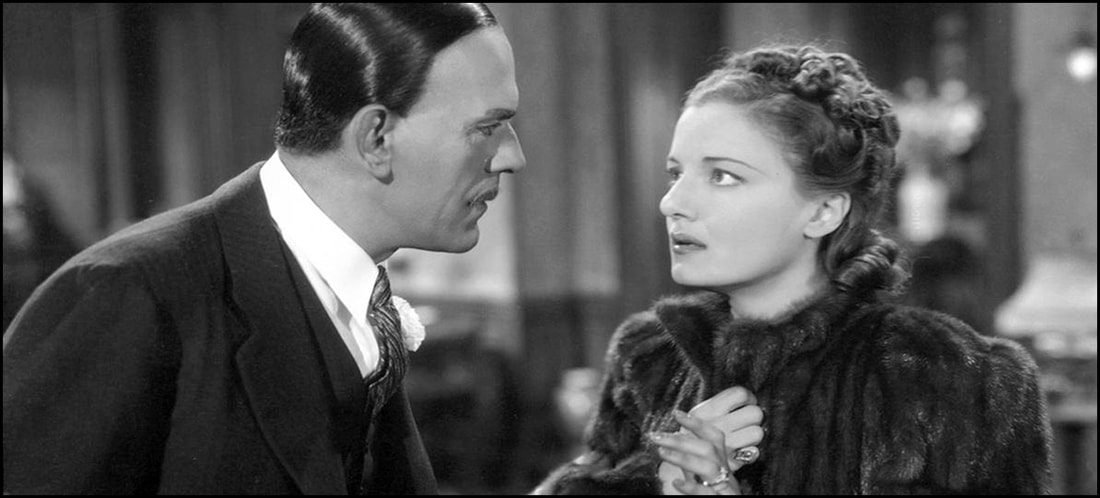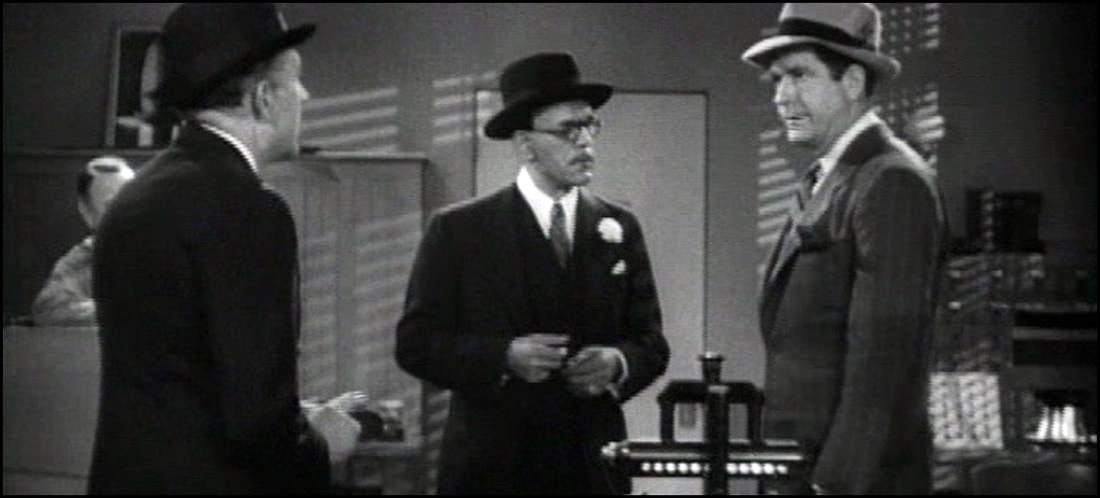Exactly how and where they evolved, however, remains a bit of a mystery. (Imagine that?) Anyone who’s done a bit of reading on their evolution will easily point to the stories of Edgar Allen Poe and Sir Arthur Conan Doyle – “The Murders In The Rue Morgue” and any one of the Sherlock Holmes tales, respectively – as the likely literary foundation for the craze. A quick search of Google.com suggests that the first theatrically popular incarnation gets credited to 1945’s And Then There Were None – a big screen adaptation of the Agatha Christie work – but I know for a fact that there were smaller features that likely led into that big success, including such film series as Charlie Chan, Mr. Moto, and even Boris Karloff headlining as the detective sleuth, Mr. Wong.
Recently, the good people at Kino Lorber released Karloff’s run in the role on home video, and I’ve been making my way through the five flicks. Today’s delight: The Mystery Of Mr. Wong, the first of two Wong pictures to hit silver screens in 1939. The film was directed by William Nigh, and screenwriter Scott Darling is credited with adapting the work of author Hugh Wiley for the screen. It stars Boris Karloff, Grant Withers, Dorothy Tree, Craig Reynolds, and Ivan Lebedeff.
(NOTE: The following review will contain minor spoilers necessary solely for the discussion of plot and/or characters. If you’re the type of reader who prefers a review entirely spoiler-free, then I’d encourage you to skip down to the last few paragraphs for the final assessment. If, however, you’re accepting of a few modest hints at ‘things to come,’ then read on …)
From the film’s IMDB.com page citation:
“Detective Wong tries to solve the murder of antiques collector who was in possession of a famous jewel known as ‘The Eye of the Daughter of the Moon.’”
Viewers following the theatrical progression of detective James Lee Wong from the first picture – Mr. Wong, Detective (1938) – to The Mystery Of Mr. Wong were likely to have been delighted as – in the transition – the character feels vastly more authentic in the follow-up film. Whereas I think the inaugural picture suffered a bit from some clunkiness largely attributed to scenes involving some supporting players, a good deal of that usual early Hollywood banter is gone from Mystery, making this one feel and function much more closely to the way even modern audiences conceptualize the classic whodunnit structure. Instead, the emphasis here is on Wong, his police captain confidant Street (Grant Withers), and the wide, wide gallery of the usual (and unusual) suspects.
A wealthy collector of antiquities, Brandon Edwards (Morgan Wallace) would appear to have it all: fame, fortune, and a philandering wife Valerie (Dorothy Tree) who can’t quite keep her attentions off her latest boytoy Peter Harrison (Craig Reynolds) or her imported singing protégé Michael Strogonoff (Ivan Lebedeff). But that’s not all he has: Edwards has secretly recovered an incredible gemstone that’s been missing from the Orient, and there’s growing suspicion that he may or may not have been involved with its original theft. Still, when the man is mysteriously shot dead during the High Society round of charades played in his own home, celebrity guest Wong is on-the-case, and he’ll see the murderer of his former friend brought to justice if it’s within his powers of deduction.
Though Monogram Pictures had a healthy reputation for being a low-budget producer, I thought that the design work for Mystery was markedly improved over the first picture, as well. Some of this might have been owed to the settings – the Edwards’ mansion is the chief setting for a great deal of the picture, so it’s given a humble touch of opulence here and there – and the end results are an outing than has the aesthetic much closer to the classic whodunnits of yesteryear. Though the quality throughout the Wong series might very, I thought this installment was incredibly worthwhile, tapped off with a winning lead performance by Karloff as our refined detective.
The Mystery Of Mr. Wong (1939) was produced by Monogram Pictures. DVD distribution (for this particular release) is being coordinated by the good people at Kino Lorber. As for the technical specifications? While I’m no trained video expert and keeping in mind that the sources are indeed a bit long-in-the-tooth (as they say), I thought a good deal of the picture looks and sounds very good: there’s some sequences with some obvious grain, and the video quality tends to dip then improve noticeably when there may’ve been a changing of the film reels from one to the next. This is not an uncommon occurrence, especially with older productions.
Highly recommended.
While this is only my second foray into the theatrical exploits of the Chinese sleuth, I thought The Mystery Of Mr. Wong (1939) to be a particularly charming affair, all buoyed by a fabulous set-up, some solid production design, and the establishment of the true aesthetic of the screen mystery. Karloff rather surprisingly – and very, very quickly – has assumed ownership of the role, transforming himself damn near effortlessly from being the stuff of nightmares to serving as the nightmare for lesser monsters who very well may’ve thought they could get away with doing the unthinkable. Not on Wong’s watch, I tell you. Not on Wong’s watch …
In the interests of fairness, I’m pleased to disclose that the fine folks at Kino Lorber provided me with a complimentary Blu-ray of their Boris Karloff: Mr. Wong Collection – which included the picture The Mystery of Mr. Wong (1939) – by request for the expressed purposes of completing this review. Their contribution to me in no way, shape, or form influenced my opinion of it.
- EZ



 RSS Feed
RSS Feed